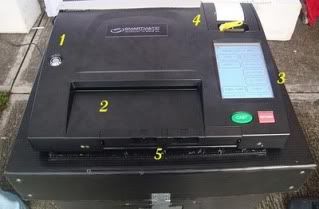There’s nothing scientific about this discussion. No winning candidate was interviewed. All information was gathered from unverified secondary sources.]

The recent elections in Tago partook of a money contest where candidates played ATMs, dispensing crisp bills as though they’d go offline in the morrow. Others made it look like they were on relief operations, giving out noodles, detergent bars, rice, toothbrush, and reading glasses.
But before going any further, a definition of some terms: a) “Tili-tili” (literally a rain shower) means either cash or goods that the candidates give to voters to win votes; and b) “Planting rice” means a wholesale giving of tili-tili.
The cash “tili-tili” in the SB race ranged from P20-50. Because there was a shortage of small bills, other candidates went for three voters for P100. This tili-tili was stapled to the candidates’ campaign material and distributed by political leaders using the Comelec’s List of Registered Voters as guide.
To be effective, tili-tili should be uniform in amount, meaning, if a candidate gives P20 to the “intelligent” voters in Poblacion Tago, then voters in Layog or Anahaw Daan should also receive P20. If the candidate becomes selective, i.e., preferring to give bigger tili-tili in Poblacion than in the barrios, he courts being junked by offended voters outside of Tago. This happened to one candidate who gave P50 in the central part of Tago and P20 in the barangays; though he won, he didn’t land in the top three as earlier predicted.
Voters without personal attachment to candidates tend to vote for whoever gives them a bigger tili-tili. Okay, not all. But most! One voter who received four 20s but had only one slot to spare said he confronted his guilt by placing the tili-tili inside a bottle and picked the candidate who would complete his list of eight SB members.
Because candidates believe that there’s no substitute for victory, they engage in planting rice. But to work, planting rice requires two things: 1) enough cash to cover all registered voters; and 2) an organization of honest and loyal leaders who will distribute the tili-tili as intended by the candidates.
By its definition, planting rice is giving tili-tili to all registered voters. But even how well-oiled he is, a candidate can’t afford to go for 100 per cent exposure. And so he or his voodoo analysts study the result of the previous elections and ask: How much percentage of the total registered voters were the votes garnered by the top SB member? The politician's crude and unwritten formula is to multiply this percentage by the present number of registered voters and then multiply the result by two. The product becomes his target for planting rice operation.
How expensive was planting rice in Tago during the recent elections? A winning candidate spent a whopping P640,000.00 by “buying” 75% of the total registered voters (about 16,000) at P40 each. Vote conversion rate however was placed at 50% because for every two voters he “bought,” he got only one vote.
(Just so you get the whole picture, let me stress the obvious. The P640,000.00 was for tili-tili purposes alone and did not include expenses for caucuses and rallies, and mobilization for leaders.)
What’s the mechanics for planting rice? Using the crude formula cited above, the candidate decides how and where to generate these target votes by checking the voters in each barangay and decides who to include in his shop list, prioritizing his and his leaders’ relatives, friends, and acquaintances.
Planting rice has become a pervading practice in Tago that it now cuts across the hitherto sacrosanct stratum of the “rich” and the “intelligent.” Leaders of politicos have become brazen as to knock at the door, holding a bundle of tili-tili for the entire household. Gracia hatud bay! And as if to lessen the shamelessness and guilt of the act, the paymasters would say that the tili-tili is all part of their budget and that if the recipient wouldn’t accept it, then it would go to their pocket.
But a total price war it was not. Some SB candidates gave P30 and still bit the political dust while others gave P20 and emerged victorious. Another candidate, who has been claiming that he's no practitioner of tili-tili giving, also won. Perhaps for these winning candidates, a good organization was the clincher. Or simply that it was written in the stars that they would become legislators no matter what.
None of of the candidates who distributed consumables won. And interestingly, all incumbent candidates, while putting up a good fight, lost. Makes one wonder how people treat performance or lack of it as voting consideration!
Here’s how the top ten SB candidates of Tago figured in the political landscape of the 13 randomly selected barangays. The 1st and 2nd placer got 13/13, meaning they were consistently in the Top 8; the 2nd, 12/13; the 4th, 10/13; the 5th, 8/12, the 6th, 7th and 8th, 6/13; and the 9th and 10th, 4/13.
I can tell you how this voting behavior changes in May 2013. But first, show me the money!




